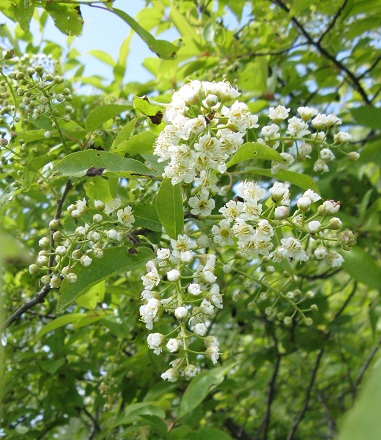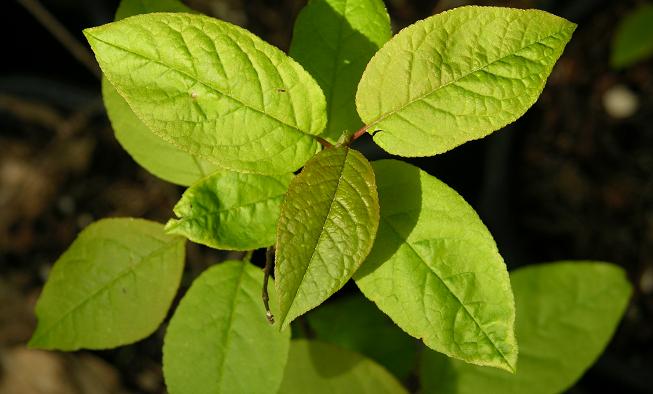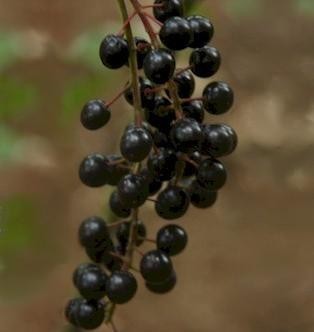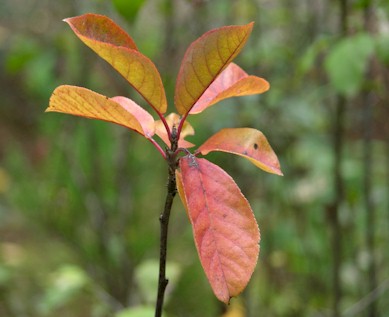|
|
|
Hansen's Northwest Native Plant Database |
|
|
|
Prunus virginiana (Chokecherry)
Photo at right by Nadia Talent |
 |
||||||||||||||||||||||||||||||
|
Note: Throughout the years I've written short articles for our website's home pages (home pages are the front page of a website) about these plants. They are now included at the bottom of this page, and are illustrated by botanical drawings and paintings, some of which are from books published from 1500 - 1900. |
|||||||||||||||||||||||||||||||
|
This decorative relative of the plum grows quickly to heights of 25.’ In the wild, it is most common in Washington, Oregon, Idaho and California at low elevations and often in riparian zones. It is hardy in USDA zones 5-10. Left on its own, Chokecherry will sucker freely to form dense stands. It requires a well-drained site and is highly tolerant of drought and cold weather. In spring the Chokecherry is bedecked with showy sprays of flowers and later reddish-black, edible fruits which are used to make delightful juice, syrups or jellies but do take care not to crush the seeds as they contain cyanide. In autumn the shiny, dark green leaves turn a deep maroon and fall to reveal the reddish twigs. This tree is perfect for wildlife who relish the leaves and fruit. |
|||||||||||||||||||||||||||||||


 |
|||||||||||||||||||||||||||||||
|
|||||||||||||||||||||||||||||||
|
Photos We Share!
|
|||||||||||||||||||||||||||||||
|